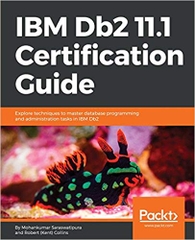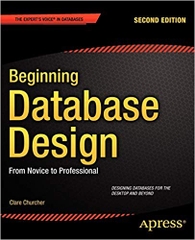-
-
-
Tổng tiền thanh toán:
-
-
Thông tin
-
Tìm sách theo yêu cầu
The gap between what a student learns in a standard database design course and what goes on in the real world is wide and is growing wider every year. Standard database design courses (included in a university computer science or information technology curriculum, or provided by vendors of database management systems) teach the concepts underlying the relational database model. They use simple examples, such as a university administration database (a favorite of authors of database books for many years), using no more than a dozen tables – so that the student can understand what is going on and can focus on the principles of database design. However, when the student comes face-to-face with database designs in the real world, he or she finds the real world a scary place. Databases designs that have hundreds of tables, use truly dreadful table-naming practices, and lack adequate documentation, make it impossible for the newcomer to get to grips with how and why the design was chosen or evolved over time. Real-world database designs also incorporate solutions – some good, some not so good – to problems that were not even mentioned in the university or vendor-provided course, such as how to handle transactions, events, and things that change over time. The newcomer may also be immersed in mystifying folklore among database designers and application developers about what are good and necessary practices, particularly with respect to database-design normalization.
This book aims to fill that gap – between the theory taught in standard courses and what happens in the real world – in order to better prepare the reader for his or her first encounter with real-world database designs. Chapters 1 to 5 provide a compact recap of the contents of a typical database design course. Besides refreshing the reader’s memory of a course that he or she may have been taken some time ago, these chapters also serve to make this book a self-contained introduction to real-world database designs for senior technology managers and others who want to understand the subject of relational databases more deeply, in order to be able to make better decisions about the architecture of complex systems of which relational databases are a part.
Tại web chỉ có một phần nhỏ các đầu sách đang có nên nếu cần tìm sách gì các bạn có thể liên hệ trực tiếp với Thư viện qua Mail, Zalo, Fanpage nhé
Đăng ký nhận tin qua email
Hãy đăng ký ngay hôm nay để nhận được những tin tức cập nhật mới nhất về sản phẩm và các chương trình giảm giá, khuyến mại của chúng tôi.












